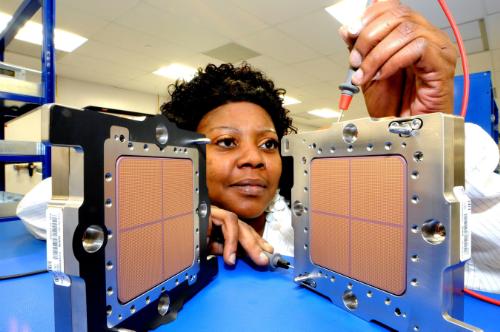IBM launches z196 processor sales (5.2 GHz)

Just a few days ago, this processor was announced at the Hot Chips 2010 conference, and the announcement was rather modest, despite the importance of the product itself. The announcement of the new processor was made not by the company's management, but by a simple (or, not so simple) IBM engineer named Brian Curran. He modestly stated that the sales of the most productive processor in the world will start soon, the clock frequency of which is, how much would you think? Yes, 5.2 gigahertz. It’s a pity, of course, but this processor can’t be built into a consumer PC, or a laptop — it’s designed for Z-series mainframes.
By the way, the density of the transistors on a chip is 1.4 billion per 512 square millimeters (oh, and I used to solder transistor receivers on 8 transistors, MP-42, and thought it was cool). In general, this processor was created on the basis of 45 nm tech. process. The processor itself is equipped with 64 kilobytes of instruction memory cache of the first level, 128 KB cache of memory for the first level data and 1.5 MB cache of the second level of memory per core. In total, this chip uses 1079 different instructions.
')
Very little time passed, and the promised processor went on sale, as several resources reported today at once. According to the group of developers, such a productive processor is very useful, for example, in large banks or retailer networks. Incidentally, the corporation allocated as much as half a billion dollars to develop productive Z mainframe Z series at one time, about three years ago. During this time, the developers of the company, in cooperation with some partners, have succeeded, and today, the first of September (hello, schoolchild or student), the most efficient processor in the world went on sale. I wonder how long it will remain the most productive processor in the world, what do you think?
I also note that the zEnterprise series includes not one, but as many as 96 processors of this type, and such a system is capable of performing 50 billion instructions per second, which is 17 thousand times more than IBM achieved in 1970 with the Model 91, System / 360 family . It seems that in ten years the
Source of
Source: https://habr.com/ru/post/103298/
All Articles